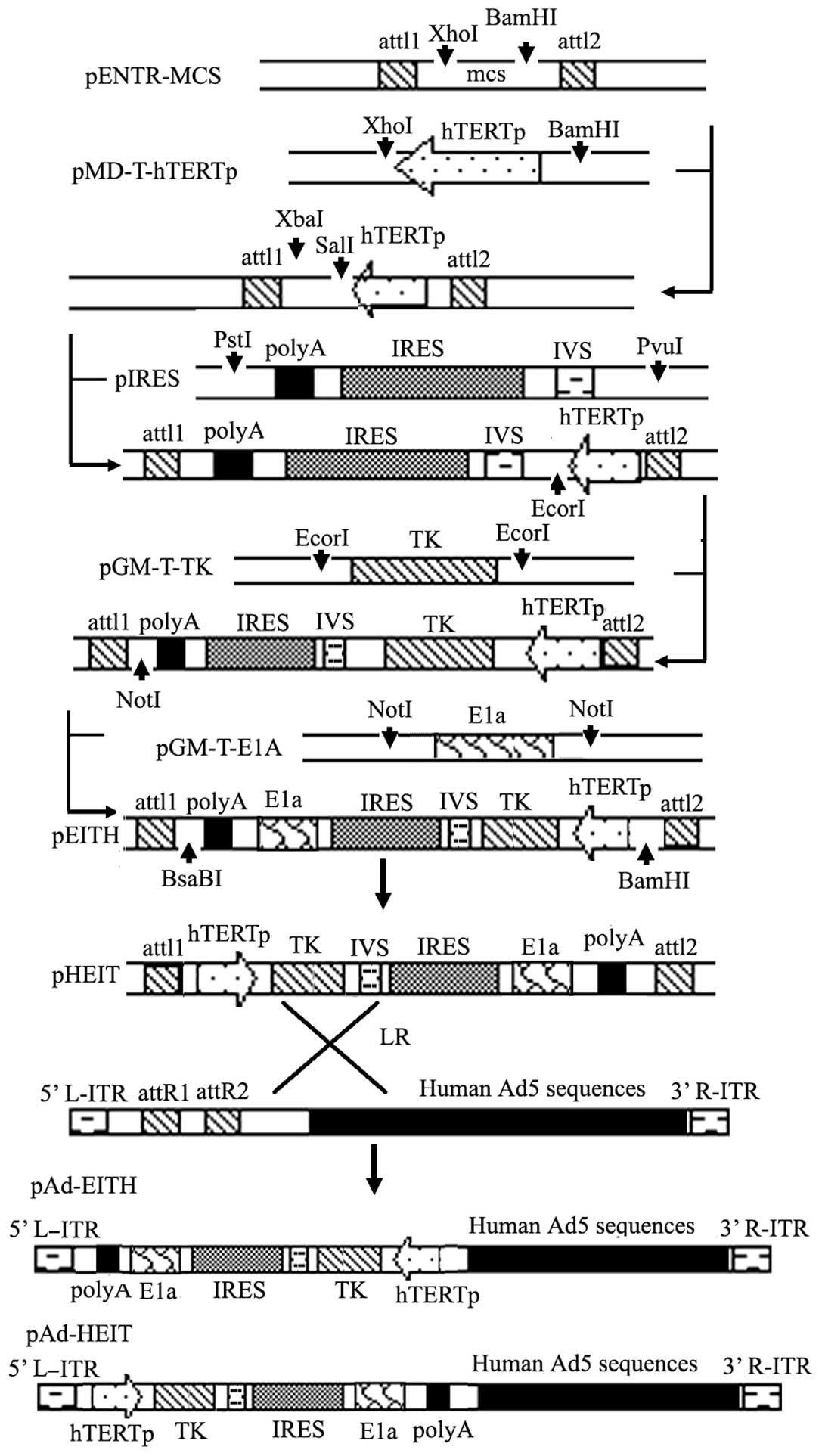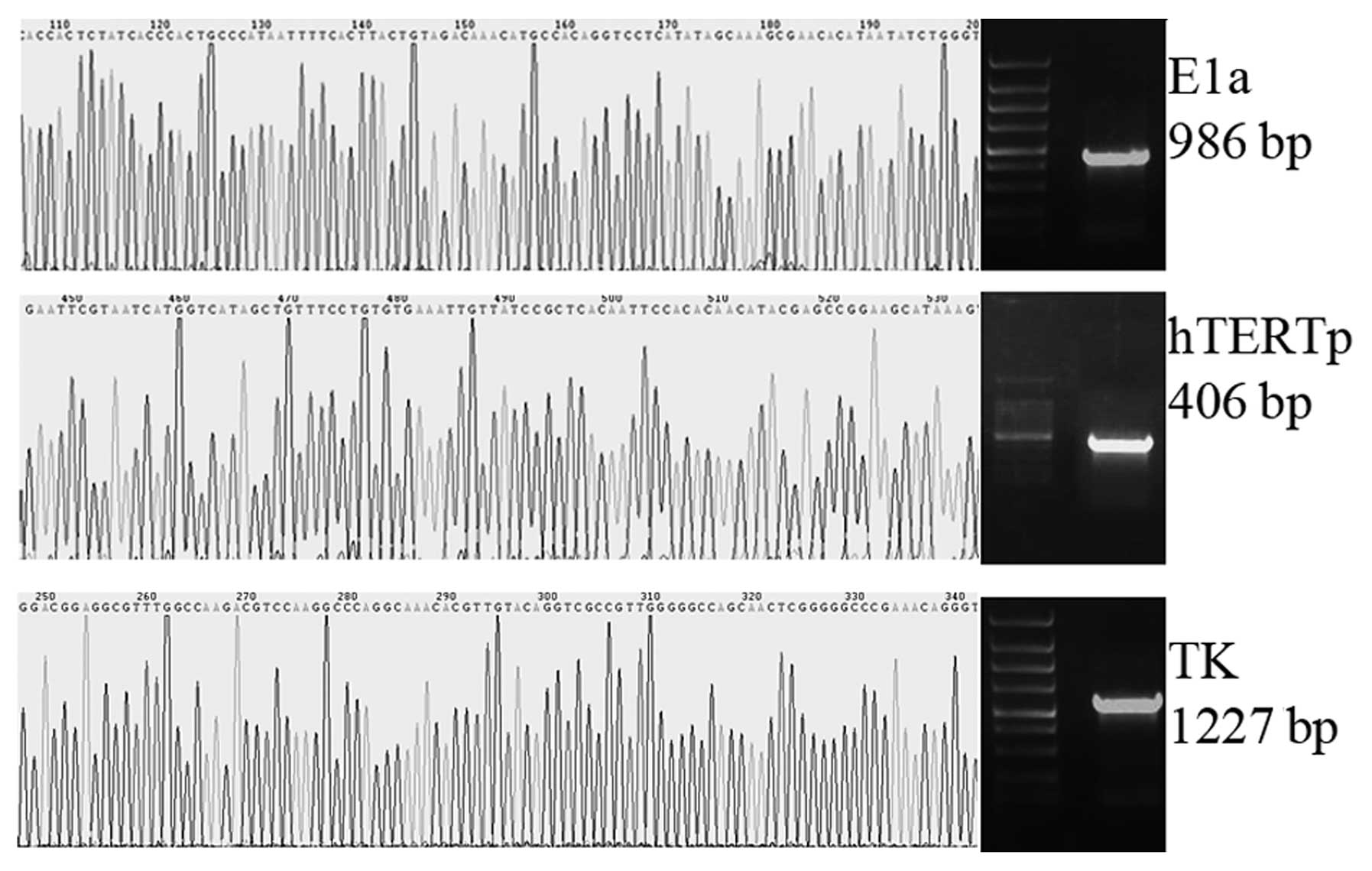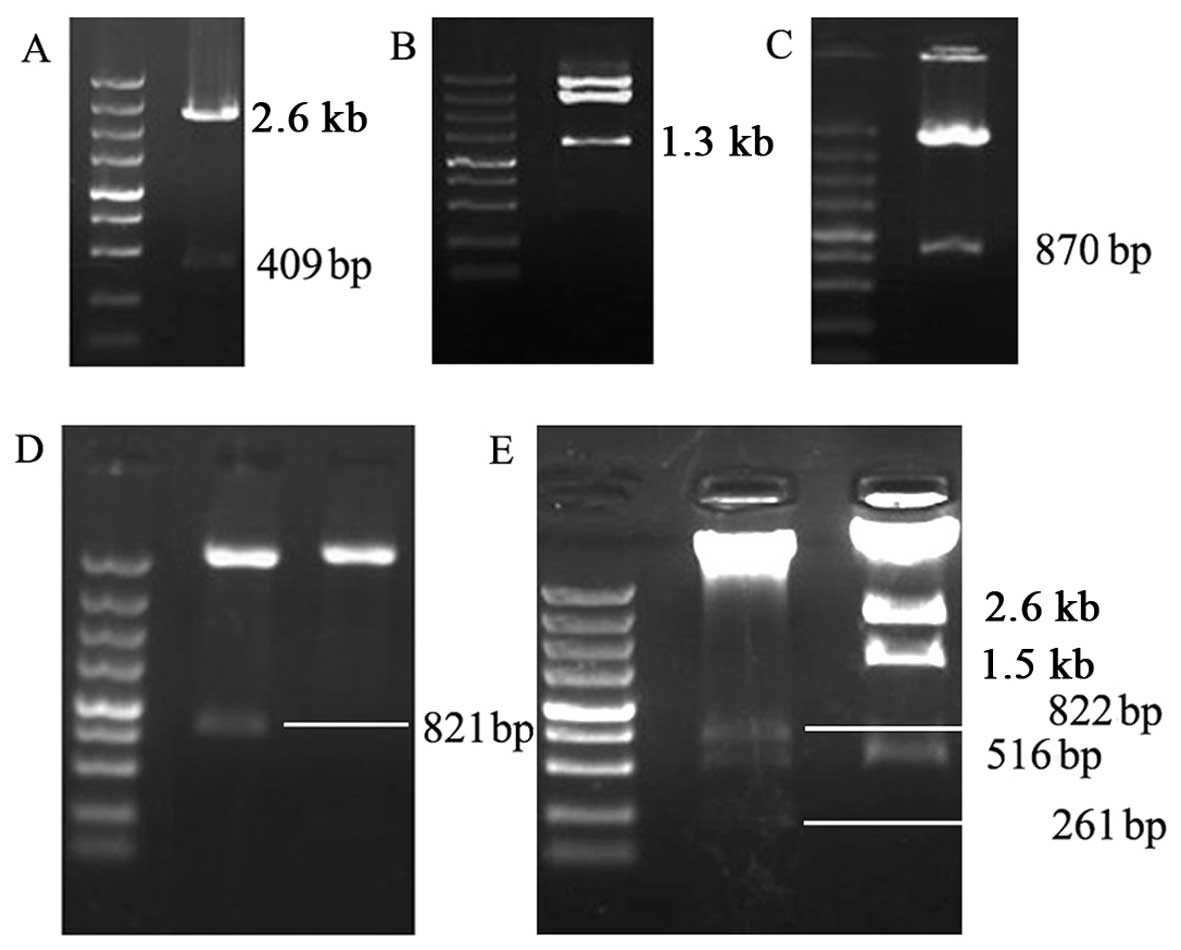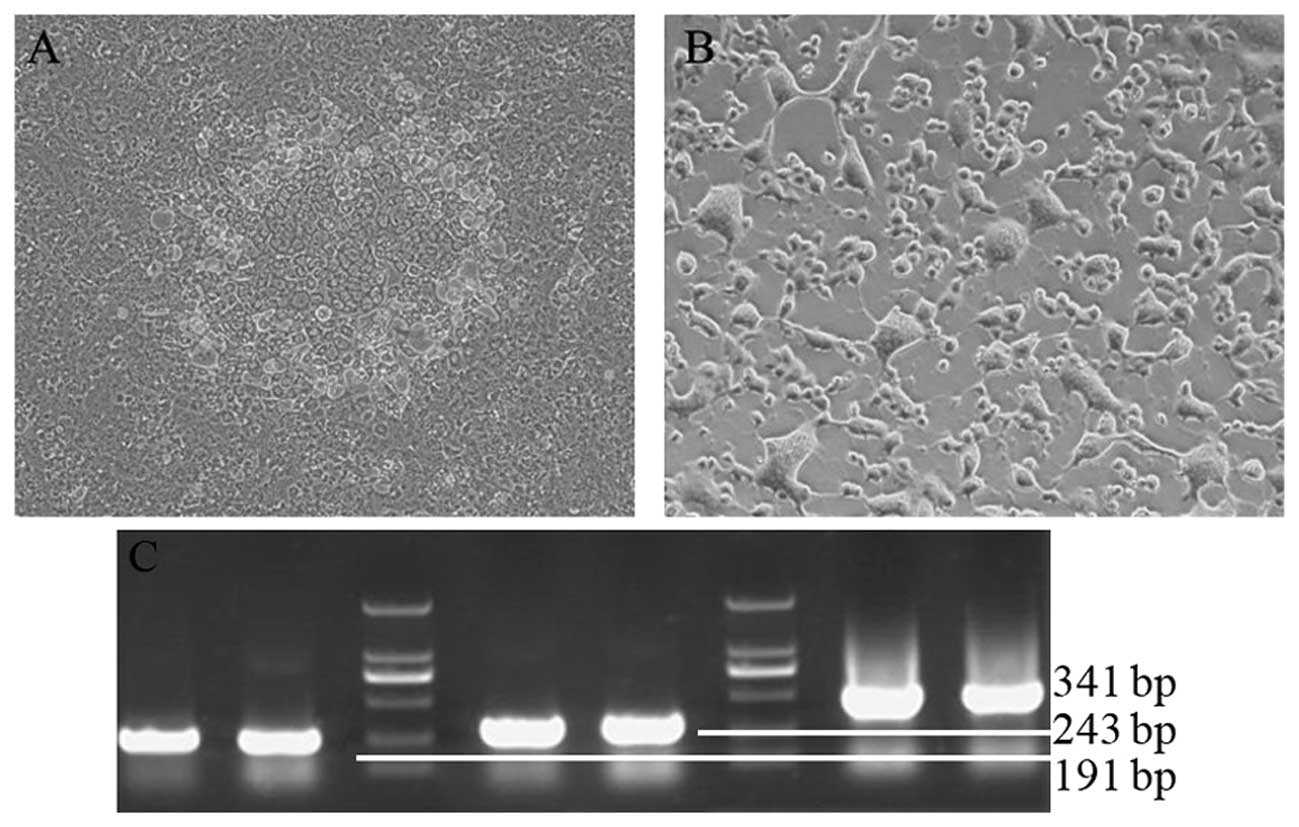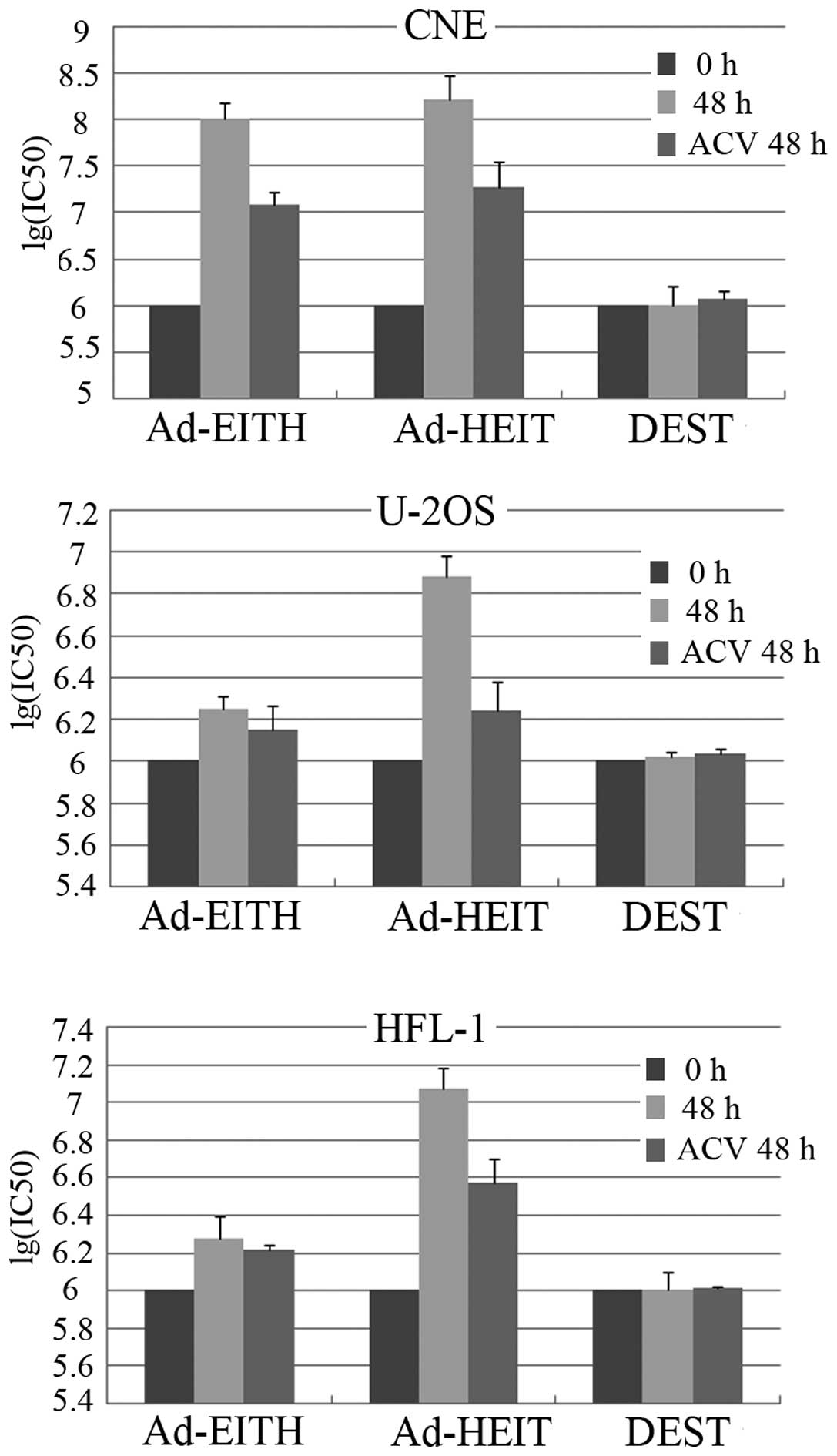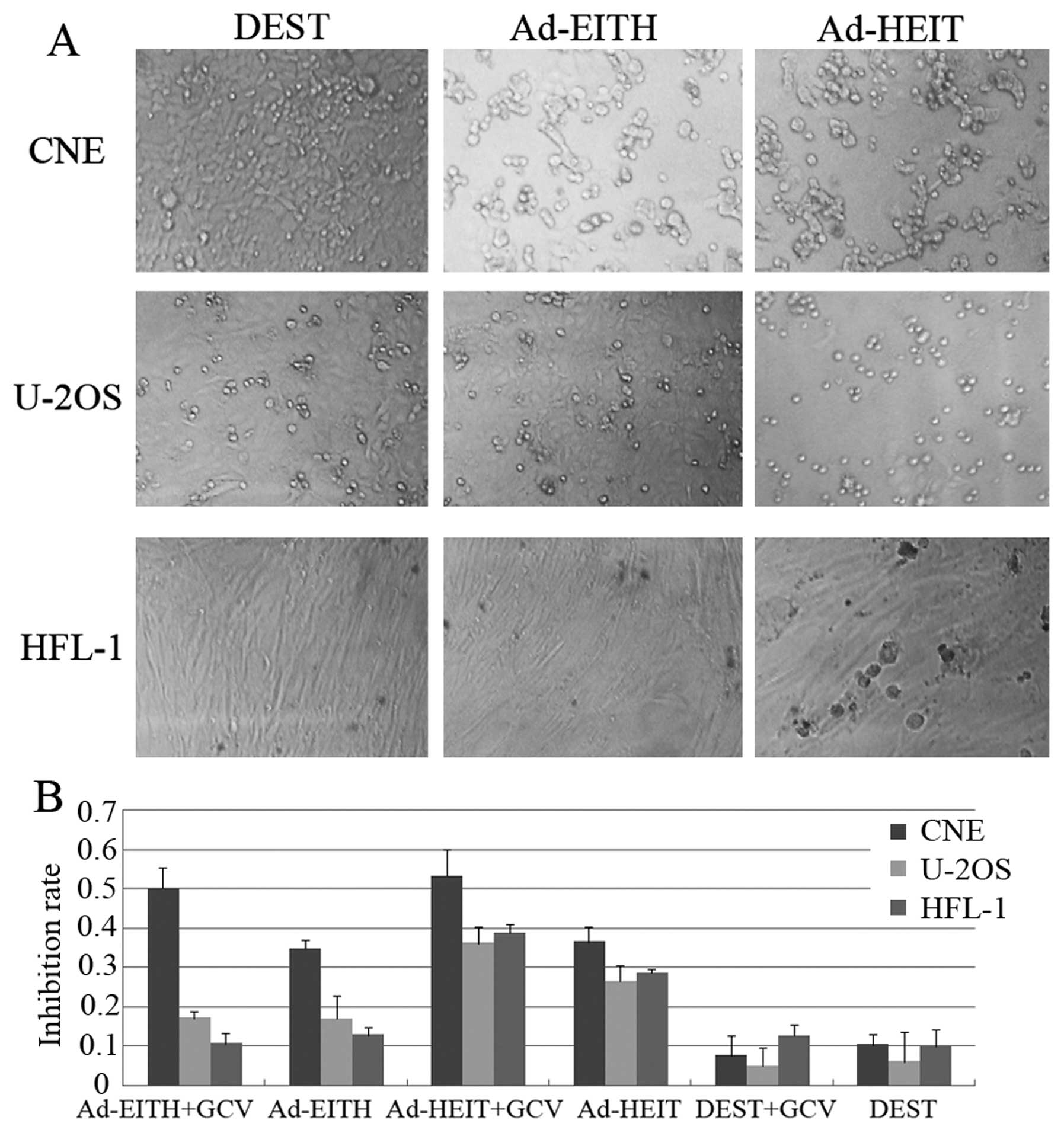|
1
|
Swisher SG, Roth JA, Komaki R, Gu J, Lee
JJ, Hicks M, Ro JY, Hong WK, Merritt JA, Ahrar K, Atkinson NE,
Correa AM, Dolormente M, Dreiling L, El-Naggar AK, Fossella F,
Francisco R, Glisson B, Grammer S, Herbst R, Huaringa A, Kemp B,
Khuri FR, Kurie JM, Liao Z, McDonnell TJ, Morice R, Morello F,
Munden R, Papadimitrakopoulou V, Pisters KM, Putnam JB Jr, Sarabia
AJ, Shelton T, Stevens C, Shin DM, Smythe WR, Vaporciyan AA, Walsh
GL and Yin M: Induction of p53-regulated genes and tumor regression
in lung cancer patients after intratumoral delivery of adenoviral
p53 (INGN 201) and radiation therapy. Clin Cancer Res. 9:93–101.
2003.PubMed/NCBI
|
|
2
|
Gabrilovich DI: INGN 201 (Advexin):
adenoviral p53 gene therapy for cancer. Expert Opin Biol Ther.
6:823–832. 2006. View Article : Google Scholar : PubMed/NCBI
|
|
3
|
Liu XY: Targeting gene-virotherapy of
cancer and its prosperity. Cell Res. 16:879–886. 2006. View Article : Google Scholar : PubMed/NCBI
|
|
4
|
Pin RH, Reinblatt M and Fong Y: Utilizing
alpha-fetoprotein expression to enhance oncolytic viral therapy in
hepatocellular carcinoma. Ann Surg. 240:659–666. 2004.PubMed/NCBI
|
|
5
|
Jakubczak JL, Ryan P, Gorziglia M, Clarke
L, Hawkins LK, Hay C, Huang Y, Kaloss M, Marinov A, Phipps S,
Pinkstaff A, Shirley P, Skripchenko Y, Stewart D, Forry-Schaudies S
and Hallenbeck PL: An oncolytic adenovirus selective for
retinoblastoma tumor suppressor protein pathway-defective tumors:
dependence on E1A, the E2F-1 promoter, and viral replication for
selectivity and efficacy. Cancer Res. 63:1490–1499. 2003.
|
|
6
|
Dilley J, Reddy S, Ko D, Nguyen N, Rojas
G, Working P and Yu DC: Oncolytic adenovirus CG7870 in combination
with radiation demonstrates synergistic enhancements of antitumor
efficacy without loss of specificity. Cancer Gene Ther. 12:715–722.
2005. View Article : Google Scholar
|
|
7
|
Uchino J, Takayama K, Harada A, Kawakami
Y, Inoue H, Curiel DT and Nakanishi Y: Infectivity enhanced, hTERT
promoter-based conditionally replicative adenoviruses are useful
for SCLC treatment. Cancer Gene Ther. 12:737–748. 2005. View Article : Google Scholar : PubMed/NCBI
|
|
8
|
Irving J, Wang Z, Powell S, O’Sullivan C,
Mok M, Murphy B, Cardoza L, Lebkowski JS and Majumdar AS:
Conditionally replicative adenovirus driven by the human telomerase
promoter provides broad-spectrum antitumor activity without liver
toxicity. Cancer Gene Ther. 11:174–185. 2004. View Article : Google Scholar
|
|
9
|
Zou W, Luo C, Zhang Z, Liu J, Gu J, Pei Z,
Qian C and Liu X: A novel oncolytic adenovirus targeting to
telomerase activity in tumor cells with potent. Oncogene.
23:457–464. 2004. View Article : Google Scholar : PubMed/NCBI
|
|
10
|
Tang XJ, Wang YP, Zhou QH, Che GW, Chen XH
and Zhu DX: A study on selective killing effect of Hsv-tk/GCV
driven by human telomerase catalytic subunit promoter on human lung
cancer cell A549. Zhonghua Yi Xue Yi Chuan Xue Za Zhi. 24:148–152.
2007.(In Chinese).
|
|
11
|
Painter RG, Lanson NA Jr, Jin Z, Park F
and Wang G: Conditional expression of a suicide gene by the
telomere reverse transcriptase promoter for potential
post-therapeutic deletion of tumorigenesis. Cancer Sci. 96:607–613.
2005. View Article : Google Scholar : PubMed/NCBI
|
|
12
|
Jiang YX, Lu Y, Liu TJ, Yang J, Chen Y and
Fang YW: Using HSV-TK/GCV suicide gene therapy to inhibit lens
epithelial cell proliferation for treatment of posterior capsular
opacification. Mol Vis. 17:291–299. 2011.PubMed/NCBI
|
|
13
|
Zhang Y, Wang CW, Wang ZG, Ma DX, Pan S,
Zhu SG, Li F and Wang B: Construction of double suicide genes
system controlled by MDR1 promoter with targeted expression in
drug-resistant glioma cells. J Neurooncol. 86:3–11. 2008.
View Article : Google Scholar : PubMed/NCBI
|
|
14
|
Huagn Y, Xu YM, Zhang JW, Ren XH and Suo
AQ: Effects of estrogen on P-Tau, ChAT and nerve growth factor
protein expressions in the brain tissue of rats with Alzheimer’s
disease. Nan Fang Yi Ke Da Xue Xue Bao. 30:2408–2410. 2010.(In
Chinese).
|
|
15
|
Geoerger B, Grill J, Opolon P, Morizet J,
Aubert G, Lecluse Y, van Beusechem VW, Gerritsen WR, Kirn DH and
Vassal G: Potentiation of radiation therapy by the oncolytic
adenovirus dl1520 (ONYX-015) in human malignant glioma xenografts.
Br J Cancer. 89:577–584. 2003. View Article : Google Scholar : PubMed/NCBI
|
|
16
|
Khuri FR, Nemunaitis J, Ganly I, Arseneau
J, Tannock IF, Romel L, Gore M, Ironside J, MacDougall RH, Heise C,
Randlev B, Gillenwater AM, Bruso P, Kaye SB, Hong WK and Kirn DH: A
controlled trial of intratumoral ONYX-015, a
selectively-replicating adenovirus, in combination with cisplatin
and 5-fluorouracil in patients with recurrent head and neck cancer.
Nat Med. 6:879–885. 2000. View
Article : Google Scholar : PubMed/NCBI
|
|
17
|
Xing L and Tikoo SK: E1A promoter of
bovine adenovirus type 3. J Gen Virol. 87:3539–3544. 2006.
View Article : Google Scholar : PubMed/NCBI
|
|
18
|
Yamamoto M, Davydova J, Takayama K,
Alemany R and Curiel DT: Transcription initiation activity of
adenovirus left-end sequence in adenovirus vectors with e1 deleted.
J Virol. 77:1633–1637. 2003. View Article : Google Scholar : PubMed/NCBI
|
|
19
|
Li C, Hirsch M, Carter P, Asokan A, Zhou
X, Wu Z and Samulski RJ: A small regulatory element from chromosome
19 enhances liver-specific gene expression. Gene Ther. 16:43–51.
2009. View Article : Google Scholar : PubMed/NCBI
|
|
20
|
Reed LJ and Muench H: A simple method of
estimating fifty percent endpoints. Am J Hygiene. 27:493–497.
1938.
|
|
21
|
Bischoff JR, Kirn DH, Williams A, Heise C,
Horn S, Muna M, Ng L, Nye JA, Sampson-Johannes A, Fattaey A and
McCormick F: An adenovirus mutant that replicates selectively in
p53-deficient human tumor cells. Science. 274:373–376. 1996.
View Article : Google Scholar : PubMed/NCBI
|
|
22
|
Niculescu-Duvaz I and Springer CJ:
Introduction to the background, principles, and state of the art in
suicide gene therapy. Mol Biotechnol. 30:71–88. 2005. View Article : Google Scholar : PubMed/NCBI
|
|
23
|
Zhang X, Zhao L, Hang Z, Guo H and Zhang
M: Evaluation of HSV-1 and adenovirus vector-mediated infection,
replication and cytotoxicity in lymphoma cell lines. Oncol Rep.
26:637–644. 2011.PubMed/NCBI
|















